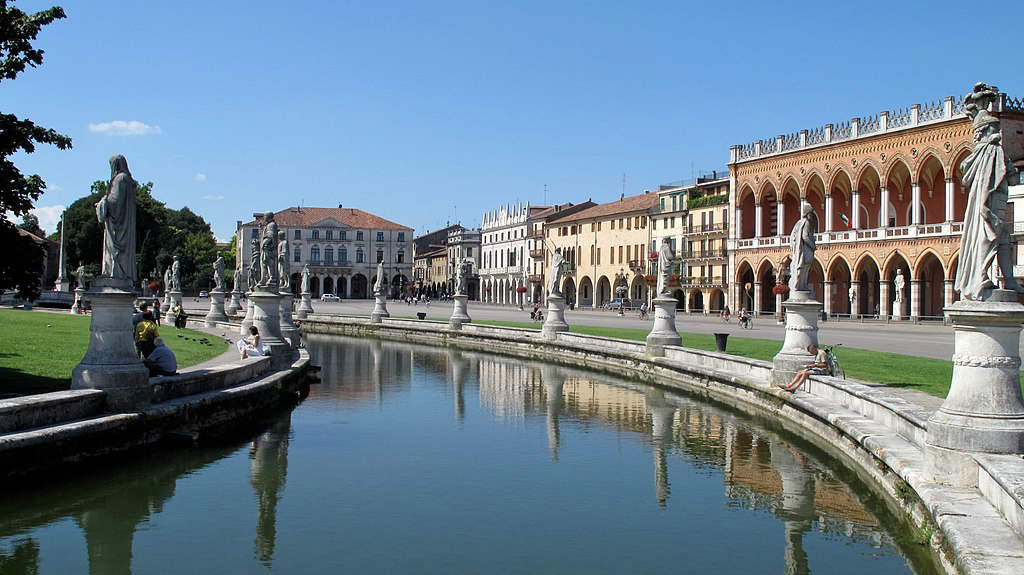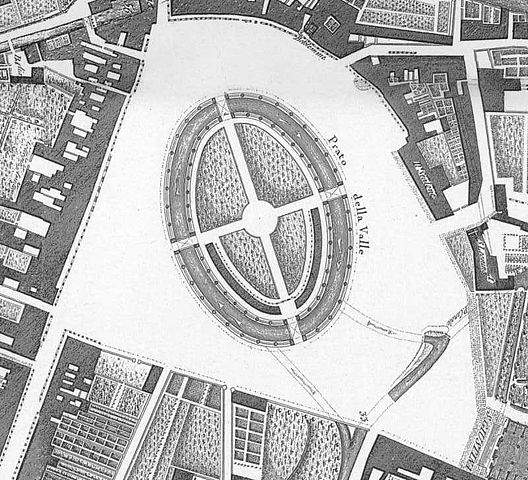Can one add the statue of a woman in Prato della Valle in Padua, the city’s marvelous secular pantheon, where, however, the monuments, with the exception of the small bust of Gaspara Stampa flanking Andrea Briosco’s statue, celebrate exclusively men? It is a topic of certain fascination, which deserves to be explored further. It is possible, in the meantime, to clear the field of misunderstandings: we are not talking here about cancel cultures, since no one has ever proposed removing or moving the existing to make room for the new. Therefore, any new statue will be added to those that already stand on the pedestals of the “Prà dea vae”: the monuments that are already there will not move an inch. Nor will it ever happen that the statue of Elena Lucrezia Corner Piscopia now at the University will be moved from a location where it is well preserved, to be exposed to the weather, pollution, and the action of animals: the superintendence will never allow it, but it should also be emphasized that moving the sculpture donated to the University of Padua by Caterina Dolfin in 1773 was not in the intentions of those who propose to erect a female monument in the Prato. And it can also reasonably be ruled out that it will be a monument lacking continuity with the rest of the square: again, the superintendence will object. So, barring unlikely upheavals, there will be no “Encore Gleaners” in the city’s largest square.
The origins of the proposal, put forward by city councilors Margherita Colonnello and Simone Pillitteri (who launched the idea of erecting a monument to Elena Corner), are by now well known: on the basis of the census of women’s monuments in Italy carried out in the fall by the association Mi Riconosci, the two citizens’ representatives realized that there are 78 statues in Prato della Valle, all of them men’s, and therefore suggested raising a monument to the world’s first female graduate in the square, using one of the two empty pedestals. The various voices in the debate so far have been excellently summarized on these pages by Leonardo Bison, and the article is a useful cross-reference to learn about the different positions. Particularly interesting is that of art historian (as well as former Pd municipal secretary) Davide Tramarin, who while welcoming the initiative of Colonnello and Pillitteri, discards the hypothesis of using one of the two empty plinths of the Prato della Valle. Tramarin’s idea is that by now in his view the historical evolution of the square, having passed “139 years” since the installation of the last statue (actually more: the last sculpture, that of Francesco Luigi Fanzago, arrived in 1838, and not in 1883), would be accomplished and would have brought to a conclusion a “precise project, also historical because it was determined in a specific epoch of the History of our city and according to a predominant taste,” and consequently the two free bases “cannot be read as an unfinished to be completed,” since there were placed there the statues of two doges that were demolished after the fall of the Venetian Republic. The unfinishedness of the square would thus be for Tramarin “a historical fact, fundamental for the reading and understanding of the monument, and an integral part of an evolution that over the course of a little more than a century, has gone through well-defined consequential phases begun and finished.” It is somewhat as if, he explained, the two empty bases are still virtually occupied today by the history of Padua. Consequently, “any addition would be wrong and fallacious.”
These are sensible arguments, but they can be countered by other observations. Three mainly: the first is the fact that the historical moment of the fall of the Republic already has its own representation, namely, the obelisks installed on the heads of the bridges leading to Memmia Island to replace the statues of the doges who were felled (the Marco Antonio Memmo-Marco Antonio Giustiniani and Domenico Contarini-Alvise Mocenigo pairs on the northern bridge, the Antonio Grimani-Francesco Morosini pair on the inner head of the western bridge). The second is the history of the project itself, which as of the date of 1797 was still far from completion, and other statues would be added starting in 1799 (in chronological order: Andrea Navagero, sculpted in 1799 by Luigi Verona; Giuseppe Tartini, an 1806 work by Sebastiano Andreosi; Melchiorre Cesarotti, an 1821 work by Bartolomeo Ferrari; Albertino Mussato, an 1831 work by Giuseppe Petrelli; and Stefano Gallini and Francesco Luigi Fanzago, both 1838 statues by Giuseppe Petrelli). Moreover, it would not be the first time that it was proposed to fill the two bases left empty in 1838: a similar hypothesis had already been put forward in 1865, the year of the sixth centenary of Dante’s birth, when the City Council proposed, and initially approved, the proposal to install there the statues of Dante Alighieri and Giotto (someone even put forward the idea of removing two of the “spires,” i.e., obelisks). The sculptures, later made by one of the greatest artists of the time, Vincenzo Vela, were eventually placed under the Loggia Amulea. Moreover, today we do not see the Prato della Valle of 1838: the square is still a living organism, passed through various modifications. The Memmia fountain, present in Andrea Memmo’s 18th-century design, was opened only in 1926. Also in the nineteenth century, plane trees were planted, then grown over the decades, so much so that, if one looks at photographs of the square in the 1980s, one seems to see a forest rather than a meadow: only in the 1990s, with the removal of the plane trees, did the square take on its present appearance, certainly closer to the eighteenth-century one, but still lacking a not insignificant part of its history. Third reason, Andrea Memmo, the man of letters who was responsible for the Prato della Valle project, did not present a complete list of all 88 statues to be placed in the square: when Memmo disappeared in 1793, Fanzago was practically a “neo-graduate,” one might say in modern terms. The statues were, if anything, the result of the ideas and generosity of the citizenry, which was required to submit proposals to a magisterium created ad hoc, the “Presidency of the Prato della Valle,” which published a manifesto on February 10, 1776, authorizing the offering of statues and setting rules on subjects (statues of saints, for example, were refused on the grounds that saints were already celebrated in churches).




The story of the “Gran Pinacoteca, or is it a collection of statues representing illustrious men” envisioned by Memmo can be read in the Descrizione della General Idea conceived, and for the most part carried out by the most excellent lord Andrea Memmo, a work published in 1786 by Abbot Vincenzo Radicchio, where we learn that the idea was to spur generous citizens to take charge of the expenses of the statues, going fishing for personalities from among the many illustrious (Paduan citizens who “made a great figure in the Roman Republic,” medieval and Renaissance lords, men of letters and scientists, military men, university rectors) of the city’s history. To give an idea of the collective spirit that led to the birth of the project, we can learn from the Description that the City of Padua wanted to pay at its own expense for a statue in honor of Andrea Memmo, but the latter out of humility refused, indicating that a statue should instead be erected to one of his ancestors, Maffeo Memmo (Maffeo’s statue was elevated in 1776, but in 1794, after Andrea Memmo’s passing, the creator of the Prato was nonetheless honored by the presidency, with a sculpture financed by Angelo Diedo and the presidents of the Prato della Valle and commissioned from Felice Chiereghin). Ultimately, adding a sculpture of an illustrious woman, in aesthetic continuity with the other monuments in the square, would not distort the history of Prato della Valle and would be in keeping with the spirit from which the “Grand Picture Gallery” was born.
The doubt, if anything, is who to pay homage to. On Elena Corner many are opposed due to the fact that the city already has a monument honoring her. Monuments to abstract concepts related to femininity, or to women victims of violence, should certainly be discarded, however noble the ideas may be: Prato della Valle was created as a place for people who have brought prestige to Padua, and it must remain so. Vittorio Sgarbi this morning launched three proposals, namely poetess Vittoria Aganoor, Eleonora Duse and Gaspara Stampa. Several names could be added. To remain in the sphere of art, one could think of Chiara Varotari, a Paduan painter born in 1584, daughter of Dario, also a painter, and older sister of the better-known and more talented Alessandro, who went down in art history under the nickname Padovanino. A significant nucleus of Chiara Varotari’s works is preserved at the Civic Museums of Padua: these are the canvases that belonged to the picture gallery of Count Leonardo Emo Capodilista, left in bequest to the City in 1864. She was esteemed already in ancient times, although it should still be remembered that praise of a woman’s virtue at the time was a literary topos and there was a tendency to exaggerate her merits: in any case, Carlo Ridolfi, in his 1648 Wonders of Art, describes her as a “valiant woman” of whom “many beautiful and resembling portraits and other praiseworthy labors” are admired, capable of renewing the memories of the “illustrious women extolled by ancient writers.” Ridolfi placed particular emphasis on the fact that, in contrast to her times, she had refused marriage, putting herself at the service of “her father’s house.” Marco Boschini, in the Carta del navegar pitoresco, speaks of her as “unique (if you can tell) in far retrati.” Cristoforo Bronzini included her in his dialogue Della dignità et della nobiltà delle donne, which was part of the debate on the role of women in the early seventeenth century (and Chiara Varotari could be remembered not so much for her artistic talent, but precisely because she recalls that precise historical moment: she was also taken as an example by Ridolfi as an artist capable of demonstrating up to “what sign donnesca perspicacity reaches”).
But there are other women in Paduan history who deserve a place in Prato della Valle, perhaps even more than Varotari. I would add two: Sibilla de’ Cetto, a noblewoman who together with her husband in 1407 founded the Hospital of San Francesco Grande. And Isabella Andreini, actress, writer and poet, known in that she was one of the first actresses in the history of theater, a revolutionary role at a time when the opportunity to tread a stage was usually reserved only for men, and the first woman to compose a pastoral fable, La Mirtilla, published in 1588. Praised by her contemporaries for her culture, in the Piazza universale di tutte le professioni del mondo, a 1599 treatise, writer Tommaso Garzoni spoke of her, calling her “the grateful Isabella decorum of the scenes, ornament of the Theatres, a superb spectacle no less of virtue than of beauty.” The final word on a possible monument in Prato della Valle, of course, will be up to the superintendence. But the openings of recent days suggest a positive outcome. And even if the possibility of a statue in the pantheon of Paduans does not happen, a monument to a woman who helped make the city great would be an entirely viable idea. And it would take nothing away from anyone.
Warning: the translation into English of the original Italian article was created using automatic tools. We undertake to review all articles, but we do not guarantee the total absence of inaccuracies in the translation due to the program. You can find the original by clicking on the ITA button. If you find any mistake,please contact us.